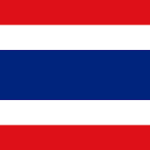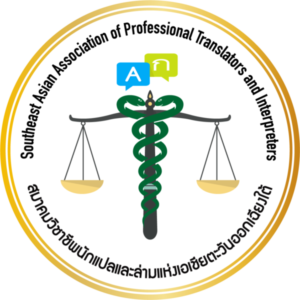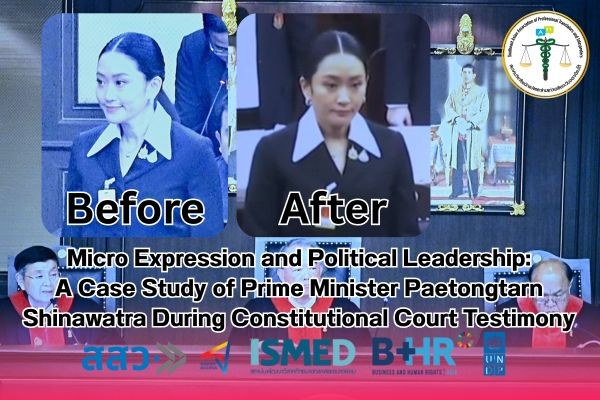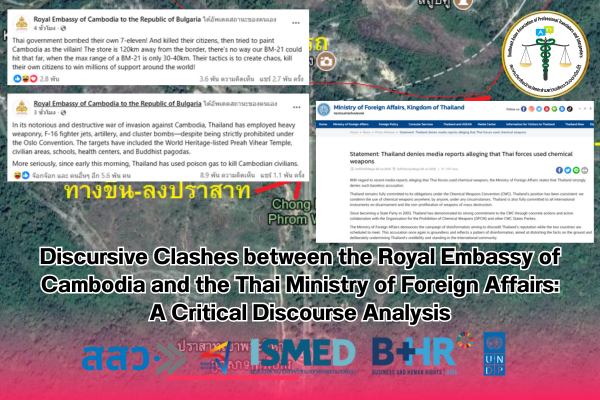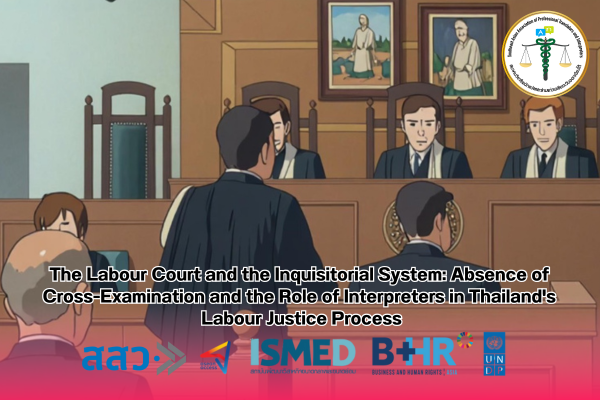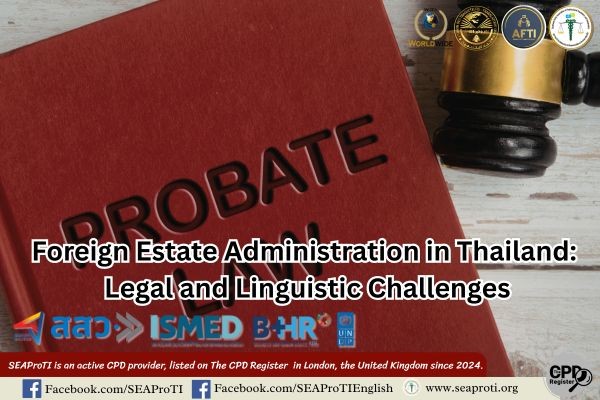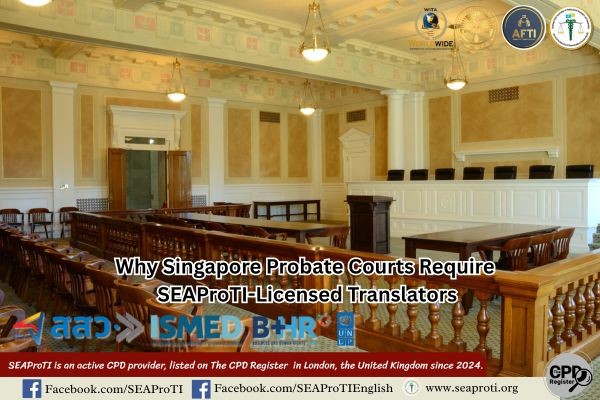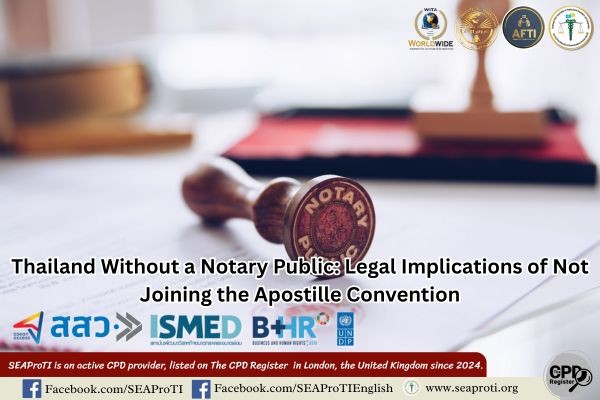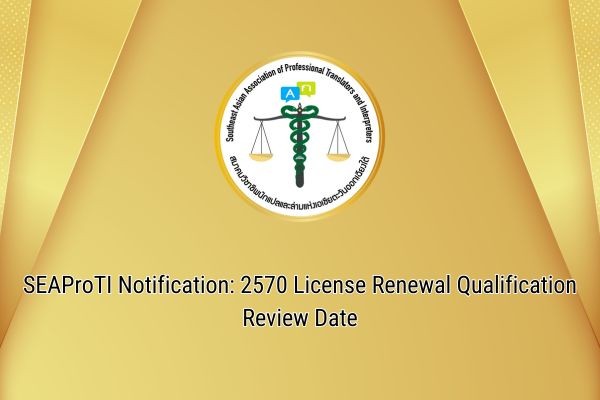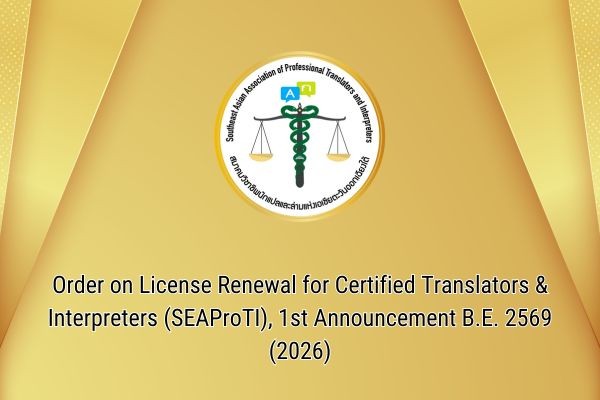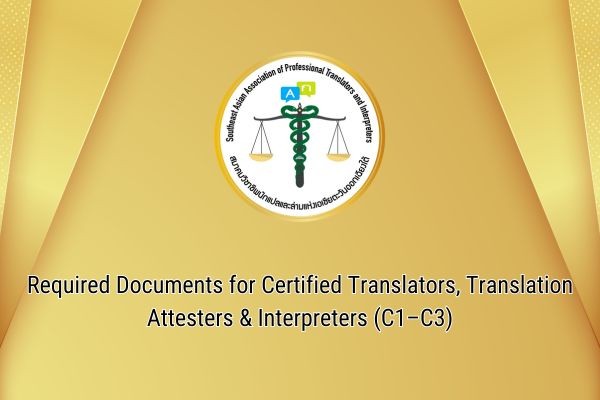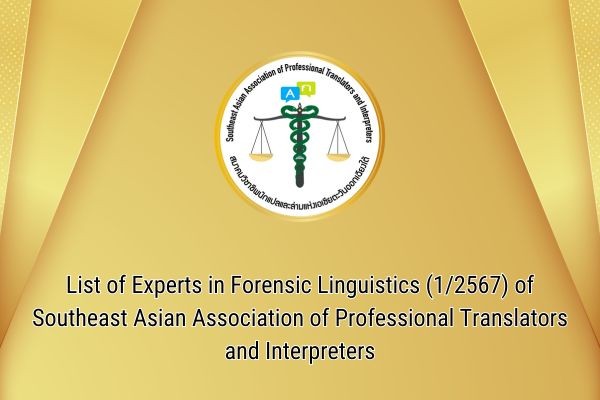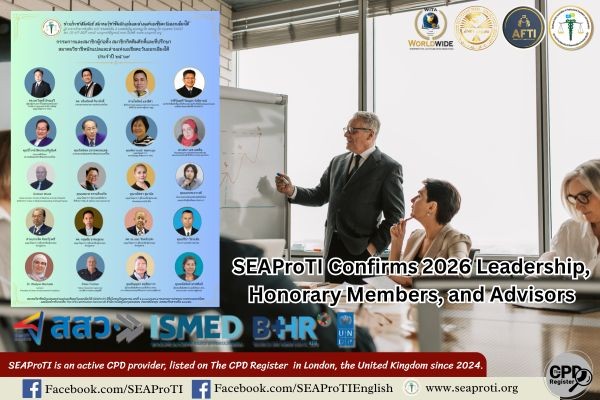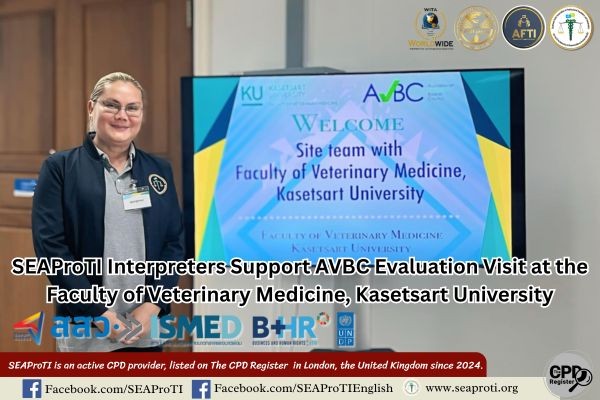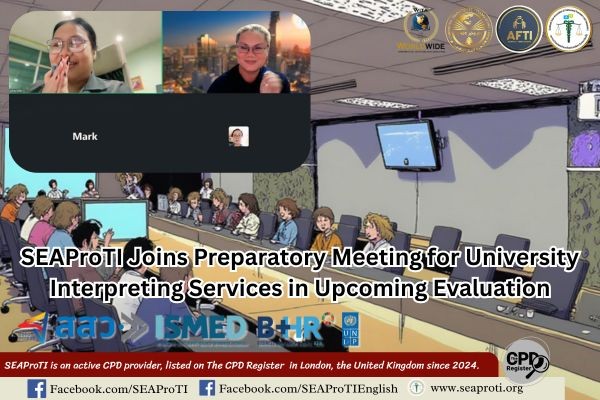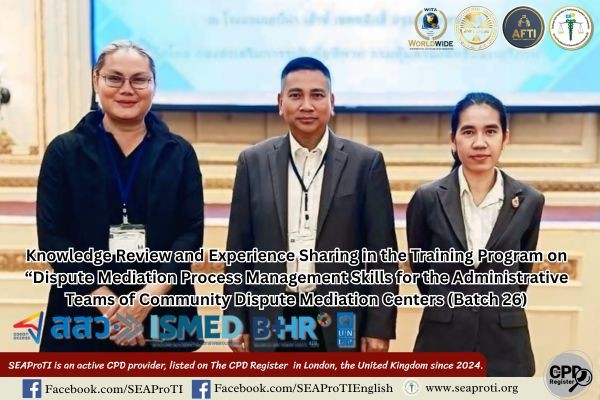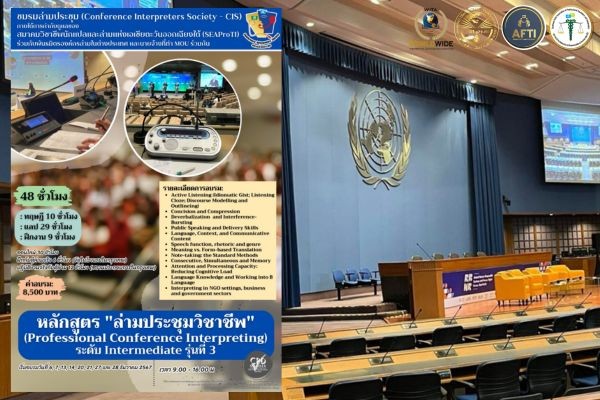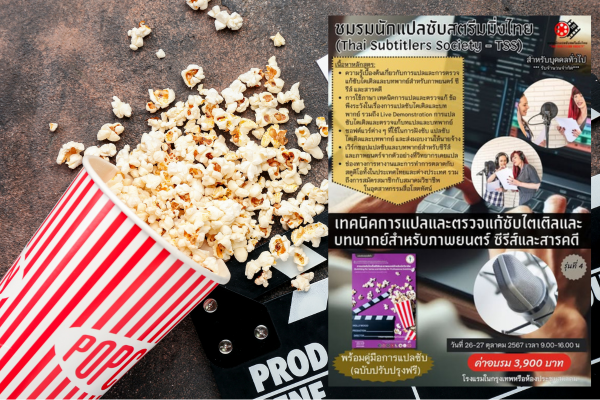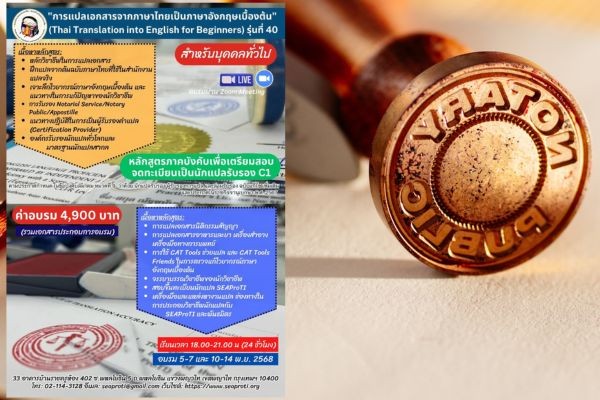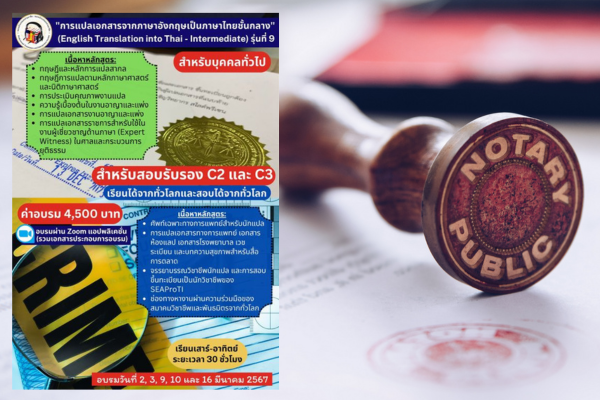Micro Expression and Political Leadership:
A Case Study of Prime Minister Paetongtarn Shinawatra During Constitutional Court Testimony
Author: Wanitcha Sumanat, president of the Southeast Asian Association of Professional Translators and Interpreters
21 August 2025, Bangkok – This article examines the micro expressions of Thai Prime Minister Paetongtarn Shinawatra before and during her testimony at the Constitutional Court. Using Paul Ekman’s framework of micro expressions, the analysis highlights how subtle, involuntary facial movements reveal underlying emotions that contrast with the controlled image of political confidence. The findings suggest that while macro-level expressions project leadership and composure, micro-level expressions reveal suppressed anxiety and pressure, offering insights into political communication and image management.
Introduction
Facial expressions play a pivotal role in political communication, often serving as a channel for emotional disclosure even when leaders attempt to maintain composure (Ekman, 2003). In high-stakes legal and political settings, such as constitutional court proceedings, leaders must carefully manage their image. However, micro expressions, defined as fleeting facial expressions that occur within 1/25 to 1/5 of a second, can betray genuine emotions that contradict deliberate displays (Ekman & Friesen, 1969).
This study examines the microexpressions of Prime Minister Paetongtarn Shinawatra before and during her testimony at the Constitutional Court, investigating how these involuntary signals reflect the psychological dynamics of political leadership under scrutiny.
Micro Expressions Before the Testimony
Before the hearing, Paetongtarn’s expressions projected confidence and composure:
- A slight corner smile, without eye involvement (a controlled smile), suggested image management rather than genuine happiness (Ekman, 2003).
- Raised eyebrows indicated alertness and mild anxiety, associated with anticipatory stress (Porter & ten Brinke, 2008).
- Deep inhalation gestures revealed physiological regulation, consistent with attempts to reduce visible nervousness.
These micro expressions reflect a dual strategy: projecting political strength while containing latent worry.
Micro Expressions During/After the Testimony
During cross-examination, micro expressions shifted to reflect intensified pressure and defensive control:
- Brief frowning (corrugator activity) conveyed suppressed frustration or stress (Matsumoto et al., 2000).
- Lip pressing indicated attempts to withhold speech or emotion, a common sign of self-restraint.
- Increased blink rate suggested heightened cognitive load and anxiety (Leal & Vrij, 2008).
- Absence of smiling reinforced seriousness and legal credibility, though it also underscored the suppression of emotional warmth previously visible.
These findings demonstrate the contrast between pre-hearing projection of confidence and in-hearing suppression of tension.
Discussion
The analysis highlights the interaction between political image management and involuntary expression leakage. Paetongtarn’s pre-hearing expressions were consistent with impression management strategies in political communication (Bucy & Grabe, 2007), while the micro expressions during testimony suggested authentic emotional struggle beneath controlled behavior.
This aligns with Ekman’s (2003) argument that micro expressions act as “windows into the soul,” revealing hidden emotions despite efforts at concealment. In judicial contexts, such cues not only impact public perception but also contribute to the broader narrative of political legitimacy.
Conclusion
Prime Minister Paetongtarn Shinawatra’s micro expressions illustrate the dual challenge of political leadership under legal scrutiny: balancing public confidence with private anxiety. While her macro expressions conveyed control, micro-level analysis exposed the underlying psychological strain of courtroom testimony.
Future research should explore how these subtle cues influence public trust, particularly in societies where political legitimacy is contested.
References
- Bucy, E. P., & Grabe, M. E. (2007). Taking television seriously: A sound and image bite analysis of presidential campaign coverage, 1992–2004. Journal of Communication, 57(4), 652–675. https://doi.org/10.1111/j.1460-2466.2007.00364.x
- Ekman, P. (2003). Emotions revealed: Recognizing faces and feelings to improve communication and emotional life. New York: Times Books.
- Ekman, P., & Friesen, W. V. (1969). Nonverbal leakage and clues to deception. Psychiatry, 32(1), 88–106. https://doi.org/10.1080/00332747.1969.11023575
- Leal, S., & Vrij, A. (2008). Blinking during and after lying. Journal of Nonverbal Behavior, 32(4), 187–194. https://doi.org/10.1007/s10919-008-0051-0
- Matsumoto, D., Keltner, D., Shiota, M. N., O’Sullivan, M., & Frank, M. G. (2000). Facial expressions of emotion. In M. Lewis & J. M. Haviland-Jones (Eds.), Handbook of emotions (2nd ed., pp. 211–234). New York: Guilford Press.
- Porter, S., & ten Brinke, L. (2008). Reading between the lies: Identifying concealed and falsified emotions in universal facial expressions. Psychological Science, 19(5), 508–514. https://doi.org/10.1111/j.1467-9280.2008.02116.x
เกี่ยวกับนักแปลรับรอง ผู้รับรองการแปล และล่ามรับรองของสมาคมวิชาชีพนักแปลและล่ามแห่งเอเชียตะวันออกเฉียงใต้
* สมาคมวิชาชีพนักแปลและล่ามแห่งเอเชียตะวันออกเฉียงใต้ (SEAProTI) ได้ประกาศหลักเกณฑ์และคุณสมบัติผู้ที่ขึ้นทะเบียนเป็น “นักแปลรับรอง (Certified Translators) และผู้รับรองการแปล (Translation Certification Providers) และล่ามรับรอง (Certified Interpreters)” ของสมาคม หมวดที่ 9 และหมวดที่ 10 ในราชกิจจานุเบกษา ของสำนักเลขาธิการคณะรัฐมนตรี ในสำนักนายกรัฐมนตรี แห่งราชอาณาจักรไทย ลงวันที่ 25 ก.ค. 2567 เล่มที่ 141 ตอนที่ 66 ง หน้า 100 อ่านฉบับเต็มได้ที่: นักแปลรับรอง ผู้รับรองการแปล และล่ามรับรอง
** สำนักคณะกรรมการกฤษฎีกาเสนอให้ตราเป็นพระราชกฤษฎีกา โดยกำหนดให้นักแปลที่ขึ้นทะเบียน รวมถึงผู้รับรองการแปลจากสมาคมวิชาชีพหรือสถาบันสอนภาษาที่มีการอบรมและขึ้นทะเบียน สามารถรับรองคำแปลได้ (จดหมายถึงสมาคม SEAProTI ลงวันที่ 28 เม.ย. 2568)
*** สมาคมวิชาชีพนักแปลและล่ามแห่งเอเชียตะวันออกเฉียงใต้ เป็นสมาคมวิชาชีพแห่งแรกในประเทศไทยและภูมิภาคเอเชียตะวันออกเฉียงใต้ที่มีระบบรับรองนักแปลรับรอง ผู้รับรองการแปล และล่ามรับรอง
การวิเคราะห์ไมโครเอกซ์เพรสชัน (Micro Expression)
ของนายกรัฐมนตรีแพรทองธาร ชินวัตร ระหว่างการไต่สวนในศาลรัฐธรรมนูญ
ผู้แต่ง วณิชชา สุมานัส นายกสมาคมวิชาชีพนักแปลและล่ามแห่งเอเชียตะวันออกเฉียงใต้
21 สิงหาคม 2568, กรุงเทพมหานคร – บทความนี้วิเคราะห์ไมโครเอกซ์เพรสชัน (Micro Expression) ของ นางสาวแพรทองธาร ชินวัตร นายกรัฐมนตรีไทย ก่อนและระหว่างการให้การต่อศาลรัฐธรรมนูญ โดยอิงกรอบแนวคิดของ Paul Ekman เกี่ยวกับการแสดงสีหน้าที่เกิดขึ้นอย่างฉับพลันและไม่สามารถควบคุมได้ การศึกษาพบว่า ขณะที่สีหน้าภายนอก (Macro Expression) ของนายกรัฐมนตรีสะท้อนถึงความมั่นใจและความสงบ แต่ไมโครเอกซ์เพรสชันเผยให้เห็นอารมณ์ที่ซ่อนอยู่ ได้แก่ ความกังวล ความตึงเครียด และการควบคุมอารมณ์อย่างเข้มงวด การวิเคราะห์ดังกล่าวชี้ให้เห็นมิติทางจิตวิทยาและการเมืองของการสื่อสารผ่านสีหน้าในสถานการณ์ที่มีเดิมพันสูง
บทนำ
สีหน้าเป็นส่วนสำคัญของการสื่อสารทางการเมือง และมักถูกใช้เพื่อถ่ายทอดความมั่นใจและความน่าเชื่อถือของผู้นำ (Ekman, 2003) อย่างไรก็ตาม ในสถานการณ์ที่มีแรงกดดันสูง เช่น กระบวนการไต่สวนของศาล สีหน้าที่แสดงออกอย่างจงใจอาจแตกต่างจากอารมณ์ที่แท้จริงซึ่งถูกเปิดเผยผ่าน ไมโครเอกซ์เพรสชัน ไมโครเอกซ์เพรสชันหมายถึงการแสดงออกทางสีหน้าที่เกิดขึ้นเพียงเสี้ยววินาทีและสะท้อนอารมณ์ที่แท้จริงแม้ผู้แสดงจะพยายามปกปิด (Ekman & Friesen, 1969)
บทความนี้มุ่งศึกษาความแตกต่างของสีหน้าของนายกรัฐมนตรีแพรทองธาร ก่อน และ ระหว่าง/หลัง การไต่สวนในศาลรัฐธรรมนูญ เพื่อทำความเข้าใจความสัมพันธ์ระหว่าง “การสร้างภาพลักษณ์ทางการเมือง” กับ “การรั่วไหลของอารมณ์ที่แท้จริง”
ไมโครเอกซ์เพรสชันก่อนการไต่สวน
ก่อนเข้าสู่ห้องพิจารณาคดี สีหน้าของแพรทองธารถูกใช้เพื่อสร้าง ภาพลักษณ์ความมั่นใจ แต่ไมโครเอกซ์เพรสชันบ่งบอกถึงความกังวลซ่อนเร้น ได้แก่
- รอยยิ้มมุมปากที่ไม่ปรากฏในดวงตา → เป็น “รอยยิ้มทางสังคม” มากกว่าความสุขแท้จริง (Ekman, 2003)
- คิ้วยกขึ้นเล็กน้อย → แสดงสัญญาณของความวิตกกังวลและการเตรียมพร้อม (Porter & ten Brinke, 2008)
- การหายใจลึกและเร็วในบางจังหวะ → สอดคล้องกับการควบคุมอารมณ์เพื่อบรรเทาความตื่นเต้น
ไมโครเอกซ์เพรสชันระหว่าง/หลังการไต่สวน
เมื่อการซักถามเริ่มขึ้น ภาษากายและสีหน้ามีลักษณะ ป้องกันและควบคุมมากขึ้น ได้แก่
- คิ้วขมวดเป็นระยะสั้น ๆ → บ่งบอกถึงความตึงเครียดหรือความไม่พอใจ (Matsumoto et al., 2000)
- ริมฝีปากเม้มแน่น → สัญญาณของการควบคุมคำพูดและการปิดกั้นอารมณ์
- อัตราการกะพริบตาที่ถี่ขึ้น → แสดงถึงความกังวลและภาระทางจิตใจ (Leal & Vrij, 2008)
- การหายไปของรอยยิ้ม → เน้นความจริงจังและการรักษาความน่าเชื่อถือในกระบวนการยุติธรรม
การอภิปราย
การเปรียบเทียบก่อนและหลังไต่สวนสะท้อนให้เห็นความแตกต่างระหว่าง การจัดการภาพลักษณ์ (Impression Management) กับ การรั่วไหลของอารมณ์จริง (Emotional Leakage) (Bucy & Grabe, 2007) ในเชิงการเมือง รอยยิ้มและความสุภาพก่อนเข้าสู่ศาลเป็นการสร้างภาพลักษณ์ที่มั่นคง แต่ในศาล ไมโครเอกซ์เพรสชันกลับเปิดเผยแรงกดดันและการควบคุมอารมณ์ ซึ่งสะท้อนความท้าทายของผู้นำทางการเมืองที่ต้องเผชิญทั้งแรงกดดันจากสาธารณะและข้อจำกัดทางกฎหมาย
บทสรุป
การศึกษานี้แสดงให้เห็นว่า ไมโครเอกซ์เพรสชันเป็นเครื่องมือสำคัญในการทำความเข้าใจความซับซ้อนของภาวะผู้นำทางการเมือง แม้แพรทองธารจะสามารถควบคุมสีหน้าภายนอกเพื่อสร้างความมั่นใจ แต่ไมโครเอกซ์เพรสชันได้เปิดเผยความตึงเครียดและความกังวลที่ไม่สามารถปกปิดได้ ข้อค้นพบนี้ตอกย้ำว่า การอ่านสีหน้าอย่างละเอียดเป็นอีกวิธีหนึ่งในการประเมินความเป็นผู้นำในบริบทที่มีเดิมพันสูง
เอกสารอ้างอิง
- Bucy, E. P., & Grabe, M. E. (2007). Taking television seriously: A sound and image bite analysis of presidential campaign coverage, 1992–2004. Journal of Communication, 57(4), 652–675. https://doi.org/10.1111/j.1460-2466.2007.00364.x
- Ekman, P. (2003). Emotions revealed: Recognizing faces and feelings to improve communication and emotional life. New York: Times Books.
- Ekman, P., & Friesen, W. V. (1969). Nonverbal leakage and clues to deception. Psychiatry, 32(1), 88–106. https://doi.org/10.1080/00332747.1969.11023575
- Leal, S., & Vrij, A. (2008). Blinking during and after lying. Journal of Nonverbal Behavior, 32(4), 187–194. https://doi.org/10.1007/s10919-008-0051-0
- Matsumoto, D., Keltner, D., Shiota, M. N., O’Sullivan, M., & Frank, M. G. (2000). Facial expressions of emotion. In M. Lewis & J. M. Haviland-Jones (Eds.), Handbook of emotions (2nd ed., pp. 211–234). New York: Guilford Press.
- Porter, S., & ten Brinke, L. (2008). Reading between the lies: Identifying concealed and falsified emotions in universal facial expressions. Psychological Science, 19(5), 508–514. https://doi.org/10.1111/j.1467-9280.2008.02116.x
* About SEAProTI Certified Translators, Translation Certifiers, and Certified Interpreters
The Southeast Asian Association of Professional Translators and Interpreters (SEAProTI) has formally established criteria for the registration of “Certified Translators,” “Translation Certification Providers,” and “Certified Interpreters.” These provisions are codified under Chapters 9 and 10 of the Royal Gazette, published by the Secretariat of the Cabinet, Office of the Prime Minister of the Kingdom of Thailand, dated 25 July 2024, Vol. 141, Part 66 Ngor, p. 100. The Royal Thai Government Gazette
** The Council of State of Thailand has proposed enacting a Royal Decree authorizing registered translators, along with translation certifiers recognized by professional associations or accredited language institutions, to certify translations. (Letter to SEAProTI dated 28 April 2025)
*** SEAProTI is the first professional association in Thailand and Southeast Asia to establish a certification system for translators, translation certifiers, and interpreters.
Head Office: Baan Ratchakru Building, No. 33, Room 402, Soi Phaholyothin 5, Phaholyothin Road, Phaya Thai Subdistrict, Phaya Thai District, Bangkok 10400, Thailand. Email: hello@seaproti.com Tel.: (+66) 2-114-3128 (Office hours: Monday–Friday, 09:00–17:00)
